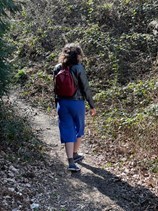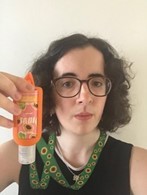Travelling with a Hidden Disability
Slowly picking up as we gradually return to normal, travel is beginning to make insurgence as the pandemic starts to recede. That sense of wanderlust is picking up - and many of us are allowing ourselves to dream of going overseas at long last.
Before the pandemic, I had slowly begun to enjoy travel - having started to grapple with issues that crop up along the way. I am on the Autistic Spectrum - and travel - even just 15 minutes on a train - can present a host of issues, such as when it comes to inaccessible environments. Add a pandemic, and the anxiety can start to become more of a problem.

These are a few of the things that I keep in mind or make use of as I travel:
Aids You Could Make Use of When Travelling with a Hidden Disability
Over the last few years, there has been an explosion of aids and adaptations available for Autistic individuals to meet a host of needs. Many are also portable and can be discreetly put away in a handbag or sensory kit.
For me, I struggle a lot with hypersensitivity associated with noise; not being able to filter noise can have a hugely negative impact in terms of speech, conversational interaction, how I feel physically, and so much more.
Airports, buses, trains are all environments where there is a lot of noise that can be difficult to contend with; earplugs are brilliant for this reason and are cheaply available from places like Amazon.
Many different fidgets are available that can provide crucial self-regulation; these can even be weighted for on your lap to give some relief.
Read More: Use AccessAble to Find Our About Airports Accessibility

Planning - And What to Expect When Travelling with a Hidden Disability
As an undiagnosed child and moody teenager, I found the constant chopping and changing of plans while travelling incredibly difficult. Having a travel route and plan written down works very well, knowing what comes next, what to expect, and allocating time for transitions, rest, and refuel. Some airports even offer printable lists as a reasonable accommodation; I also use Google Maps due to the unreliable travel networks.
I also love lists - simply to ensure everything is how I plan it to be, my short-term memory is not great. Preparation means my bag is packed the night before - complete with any aids - travel route written out, outfit laid out, breakfast prepared ahead of time. I’ll also have my routine written out step by step in more extreme circumstances - such as illness, my proprioception and social skills will be hit.
Read more: Tackling Airport Anxiety with AccessAble
Consider your sensory triggers and how you can negate the potential risk; will the environment play loud music? Will there be many people crowds? If so, do you have to travel at peak hours? Do you have a comorbid condition or other disability? Will there be accommodations available? These are all things it is worth considering.
Having an Autism alert card is also an excellent way to be prepared in terms of potential situations arising – and if you need to communicate your needs quickly.
Schemes And Accommodations for People Travelling with a Hidden Disability
While the purpose of the Sunflower Lanyard Scheme seems to have changed through the pandemic and is more frequently by individuals who use it as a marker to claim mask exemptions, it is still a good scheme for those who have an invisible disability. Essentially, a lanyard with a sunflower pattern signal to a certified vendor that you may need help due to your disability - and staff will discreetly approach. Personally, using this scheme made my first ever solo flight wonderful. Going to the States in 2020 was brilliant; no meltdowns or anxiety; I enjoyed the flight so much.

Airports also sometimes offer sensory rooms too.
While some railway networks may be criticised for lack of reliability, some do other ‘rail assistance’ if you are on the Autistic spectrum.
Read More: Finding accessible hotels with AccessAble
What still needs to be done to help travelers with Hidden Disabilities
I am privileged to walk and talk; it may not be immediately apparent that I am on the Autistic spectrum. People tend not to believe me while I am trying to advocate for my support needs.
This refusal to be believed is something those with invisible disabilities have to put up with a lot. The impact on a journey can be harmful - and it leaves a horrible feeling, thanks to the assumption ‘can’t you just be normal?’
Airports and other places like train stations could do a lot better when it comes to travel by encompassing all disabilities when it comes to accommodations. ‘proving’ myself becomes tiring and humiliating, even when somewhere simple like an entertainment venue. It takes a lot of time and preparation, but I have missed travel so much.
Read More: Accessible Travel Tips
Lydia Wilkins is a freelance journalist and copywriter covering disability and social justice issues. Her work has appeared in publications such as The Independent, Readers Digest, The Metro, Refinery 29, Underpinned, Conscious Being Magazine, PosAbility and many others. Her debut book, The Autism Friendly Cookbook, will be out in 2022 via Jessica Kingsley Publishers (JKP).

Read more from Lydia
- Lydia's website: https://lydiawilkins.co.uk
- Twitter profile: https://twitter.com/Journo_Lydia
- Instagram: https://www.instagram.com/journo_lydia/
Where Next?
Read More: The Importance of Accessibility in the New Normal
Read More: The Drive to Improve Motorway Journeys for Disabled People

